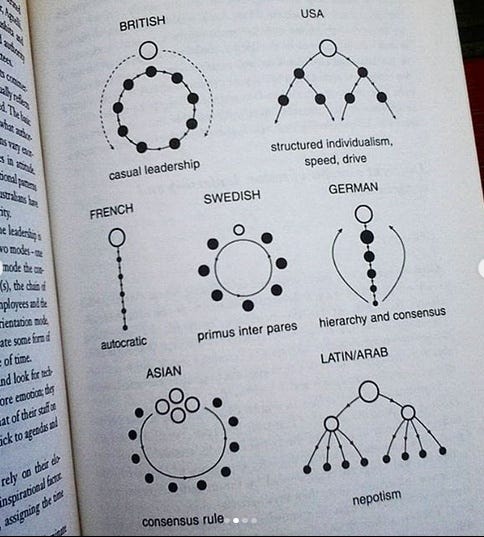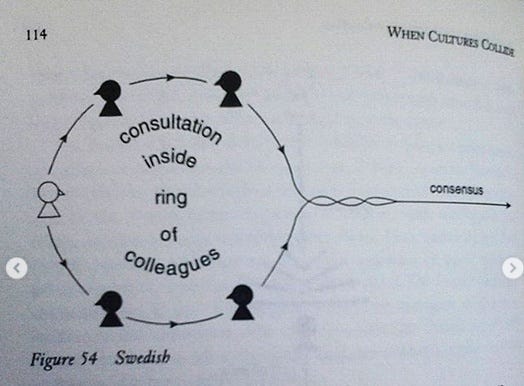Double Book Review: HOW TO MAKE YOURSELF MISERABLE by Dan Greenburg; WHEN CULTURES COLLIDE by Richard D. Lewis
The human comedy in life and at work
1.
Book Review: HOW TO MAKE YOURSELF MISERABLE (1966, revised edition 1987) by Dan Greenburg, with Marcia Jacobs
Each time you blink, a new "self-help" book is published — packed with "Positive Thinking" and pictures of smiling, confident people. This is not one of those books. It instructs you how to become more neurotic, pessimistic, apathetic, unsuccessful and lonely.
If you grew up reading MAD Magazine (before it folded), you'll be familiar with this type of humor. The parody of Positive Thinking is spot-on and laugh-out-loud funny. The excellent cartoon illustrations only increase the amount of laughter to be had from this "sick" book.
HOW TO MAKE YOURSELF MISERABLE works on two levels: As a parody… and as a real guide to recognizing self-destructive thinking through humor.
Warmly recommended to neurotics everywhere.
FUN TIP: Give this book to people who try to make you read self-help books! ;-)
2.
Book Review: WHEN CULTURES COLLIDE: MANAGING SUCCESSFULLY ACROSS CULTURES (1996) by Richard D. Lewis.
(New edition re-titled WHEN CULTURES COLLIDE: LEADING ACROSS CULTURES)
Check out the sample figures from this book. I like them a lot, and I can confirm that the author accurately describes the "management culture" typical of my native Sweden.
WHEN CULTURES COLLIDE is a book about how management/organization culture differs in various countries. It depicts and explains the misunderstandings that can happen when different cultural mindsets clash in international business.
Going into a situation where we must communicate with people from other cultures, we often assume that "surely they will communicate in the same way we do."
But what if they don't? We carry a lot of unspoken assumptions — what to say and when, how to "get to the point," what is proper/improper, etc.
The author explains and describes how different cultural and historical circumstances shape different cultural patterns of communication and delegation. Some cultures will get along just fine (Finns and Americans, for example), others will run into misunderstandings.
Written in an easy, accessible style with lots of explanatory figures and anecdotes, the book makes the subject both entertaining and insightful. I learned a lot from it.
The "communication" diagrams are often quite funny. They will make you smile, perhaps in recognition of your own experiences.
Has the book dated well since it came out? It could be that cultural differences are gradually being "smoothed out" in today's interconnected world. But even so I think this book is still valid; it can teach you awareness about the issue, and that alone makes a difference.
Recommended not only for people who travel and work internationally, but also for those who are interested in understanding other cultures (and their own) in a practical, down-to-earth context.






